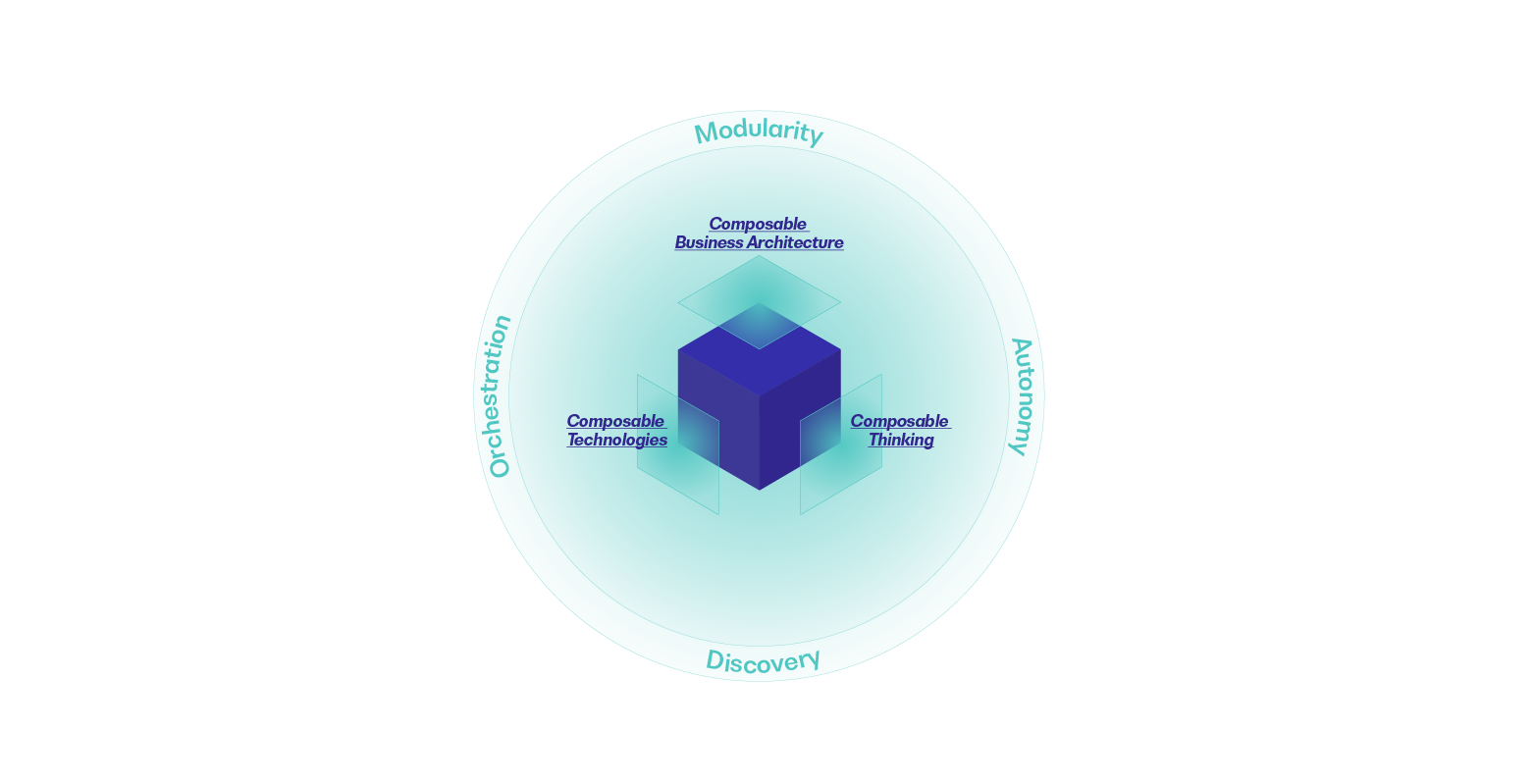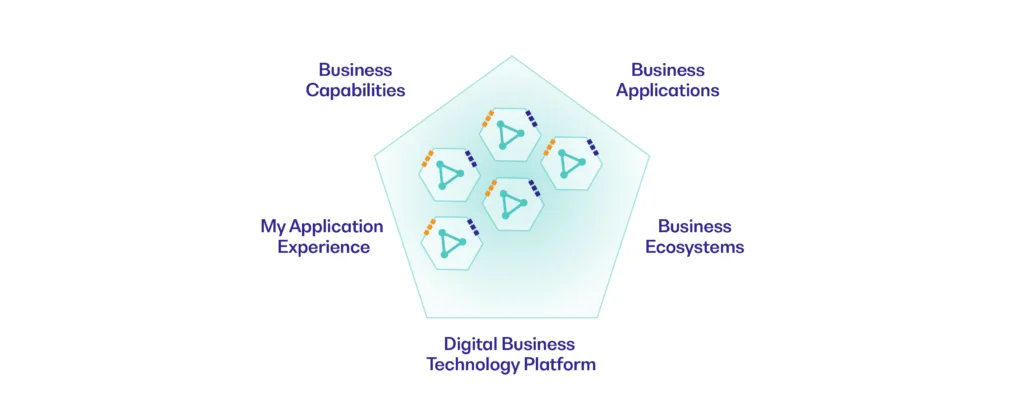What Is Composability and Why Is It Important to Future-proof Your Business?
Composability is an approach that offers unprecedented agility and flexibility. It introduces complexity into the business model, but the results are worth it.
Intro
Composability is a concept coined by Gartner, discussed during the opening keynote of the Gartner IT Symposium/XPO in October of 2020. During the keynote speech, senior Gartner research analysts explained that: "The world today demands something different from us. Composing - flexible, fluid, continuous, even improvisational - is how we will move forward. That is why composable business is more important than ever."
During the early days of the pandemic, a composable approach proved its merits by allowing companies to pivot easily and be resilient in the face of rapid market changes. Furthermore, as Quidgest reports, "Gartner predicts that, by 2023, organizations that have adopted a composable approach will outpace their competitors by 80% in terms of implementing new features."
When applied properly, composability gives businesses the flexibility they need to stay profitable even as the world around them changes. The approach can be applied to every level of a business, from company culture, to business architecture and even down to the applications and technologies used.
In this post, you’ll learn what composability is and what makes it so essential in our modern world. We’ll also discuss the three pillars of composability and how they can help enterprises work more efficiently and flexibly. Further, we'll take a look at the challenges and opportunities that a composable approach can offer.
The pillars and principles of composability
Composability is built on three pillars: composable thinking, composable business architecture, and composable technologies. Used together, the three pillars give businesses unprecedented opportunities to iterate quickly and respond to changing demands, creating a fluid user experience no matter what happens.
- Composable thinking refers to staying creative and incorporating composability into your planning and decisions. It encourages looking for new ways of undertaking tasks and thinking outside the box.
- Composable business architecture ensures flexibility and resiliency. A composable business architecture is often compared to “Lego blocks” because it allows your business to modularly rearrange dependencies and responsibilities whenever necessary.
- Composable technology gives businesses the technical support they need to be future-proof. It forms the backbone of composable business architecture and composable thinking.
In addition to the three pillars, Gartner lists four key principles of composability. The principles are borrowed from the world of application development and are applied to business strategy, architecture and technology. The key principles are:

- Discovery — allows organizations to gain more speed
- Modularity — provides improved agility
- Orchestration — improves leadership
- Autonomy — increases resilience
Gartner explains that: "these four principles can be viewed differently depending on which building block organizations are working with:
- In Composable Thinking, these are design principles. They guide an organization’s approach to conceptualizing what to compose, and when.
- In Composable Business Architecture, they are structural capabilities, giving an organization the mechanisms to use in architecting its business.
- In Composable Technologies, they are product design goals driving the features of technology that support the notions of composability.
The pillars in practice
So how does this work in practice? Let's imagine a company that is facing a major disruption to its existing business model. They would begin by using the “composable thinking” pillar, applying discovery, modularity, orchestration and autonomy to the problem-solving process:
- They would use discovery to document different business metrics and processes.
- They might use the principle of modularity to develop cross-departmental task forces to brainstorm solutions.
- Managers would use the principle of orchestration to effectively delegate responsibilities.
- And different teams would be given appropriate amounts of autonomy so they could make progress no matter what was going on with other teams or other departments.
With the solutions developed using composable thinking, the company would move on to developing a composable business architecture:
- This would involve discovering the different business units and functions of the company, which could be viewed as modular building blocks of the company.
- These could be orchestrated by management, perhaps with one business function being used across multiple business units for improved efficiency.
- Again, each unit or function would be granted as much autonomy as needed to ensure that it can function well even if other units are having difficulties.
Finally, composable technology would be needed to support the new business structure:
- This would involve discovering the different business units and functions of the company, which could be viewed as modular building blocks of the company.
- These could be orchestrated by management, perhaps with one business function being used across multiple business units for improved efficiency.
- Again, each unit or function would be granted as much autonomy as needed to ensure that it can function well even if other units are having difficulties.
Finally, composable technology would be needed to support the new business structure:
- This could range from server architecture to apps themselves.
- Discovery would be used to take an inventory of existing technology and determine what needs to be added or changed.
- Ultimately, the composable technology would function modularly at all levels, from servers to applications.
- Apps would be built using modular functions (called microservices) that can be assembled in different ways to do different jobs. The different microservices are orchestrated (that is, managed) by a central service that tells them all what to do.
- The composably-built server architecture allows the apps to be scaled up and down as needed, responding quickly to rapid changes in demand.
- And both the servers and the microservices are designed so that they can scale and operate autonomously from the others, which creates optimum flexibility and systems security.
What is a composable enterprise?
A composable enterprise is one that follows the principles discussed above. It is a business strategy, company culture, and IT principle rolled into one. A truly composable enterprise will be positioned to take all the working parts of the business and recombine them as needed.

This means, for example, that sales channels can easily be changed - from brick-and-mortar stores to digital, if needed, or from one digital medium to another. Or a company could pivot from manufacturing skin care products to hygiene products, as Unilever did at the beginning of the pandemic.
The opportunities and challenges of composable business
Composability offers businesses a host of opportunities, but is not without its challenges. Let's take a look at some of each:
Opportunities:
- It offers incredible flexibility. In an application that is based on microservices, for example, a single microservice can be changed without needing to touch the code of the other application components. This makes it possible to roll out updates seamlessly.
- It offers scalability. If, for example, website traffic to an e-commerce shop suddenly spikes, a monolithic application might crash. A cloud-based composable application, however, will be able to scale up instantly to meet demand, and will have the elasticity to scale back down when the peak is over.
- It allows innovation. When companies think in terms of modular building blocks at all levels of business, they can shift business models or sales channels incredibly quickly. Composability makes it possible to adopt an iterative approach to business strategy without needing to use complicated workarounds. It lets businesses continuously optimize the user experience and streamline their operations.
Challenges:
- It requires new ways of thinking. Because a composable business is so agile, companies need to work hard to keep up with the pace of change. They may need to create cross-functional teams to help lead the way.
- The technology can be more complex. A switch to a composable software ecosystem requires an investment in new IT workflows and technology. Many individual, modular components need to be managed and orchestrated. New security procedures may need to be implemented and new checks put into place.
- It isn't an "out of the box" solution. Especially when it comes to e-commerce, composable isn't for everyone. For businesses that have advanced to a certain level of complexity -- operating in multiple territories, or using a multi-channel or omni-channel setup -- composability will let them build exactly the solution they need. However, businesses with more straightforward needs might be better served by a one-size-fits-most monolithic solution that they can install and start using right away.
The benefits of composability and composable architecture
Composability gives your business unprecedented flexibility and lets you iterate and pivot quickly. As your business integrates the principles and pillars of composability to an ever greater extent, you will find that you are more agile than ever. You'll be able to execute more consistently and respond more quickly to market disruptions.
Additional benefits of composable software applications and composable infrastructure:
- Allows you to allocate and combine resources in a more cost-effective way
- Flexible platforms let you reduce overuse or over-purchasing of licenses
- Reduces or eliminates the need for extra third-party software, which simplifies workflows and helps employees perform better
- Allows you to use a best-of-breed approach, so you can create a customized user experience for your customers
- Cloud architecture allows resources to be pooled and scaled quickly, reducing underutilization and overprovisioning
- Infrastructure can be configured in real-time, which makes server space and IT infrastructure more cost-efficient
Summary
Businesses that adopt a composable strategy are positioned to succeed in an uncertain world. By applying the four principles and three pillars of composability, businesses can iterate and adapt quickly to changing demands. To successfully adopt a composable approach, businesses need to develop a new company culture that is prepared to deal with rapid change. They will need to restructure their business architecture and follow best practices to ensure that their data remains secure in the cloud. But although composability does introduce new complexity into business operations, in many cases it is worth it. For enterprises who are ready to take the leap, it will give them the flexibility they need to streamline and optimize their processes no matter what comes next.

Evaluation methodology.
Working together with scientists and industry leaders from the respective cloud areas, our evaluations are based on an industry peer review standard that meets the highest standards of objectivity. All the insights are combined in a single figure, which means they can be applied more easily and effectively from both a technical and a business perspective.
















